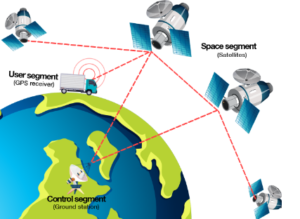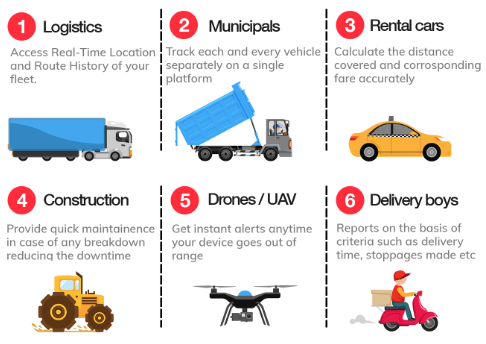GPS Technology
July 22, 2024: Global Positioning System (GPS) technology is an integral part of modern life, enabling navigation, mapping, and timing applications. Understanding the physics behind GPS technology is crucial as it combines principles from various disciplines such as satellite communication, signal processing, and relativistic physics. This article delves into the details of GPS technology, its functioning, and the underlying physics principles.

Overview of GPS Technology

GPS is a satellite-based navigation system that provides location and time information anywhere on or near the Earth where there is an unobstructed line of sight to four or more GPS satellites. The system comprises three segments:
1. Space Segment: Consists of a constellation of at least 24 satellites orbiting the Earth at an altitude of about 20,200 kilometers. Each satellite transmits signals that include the satellite’s position and the exact time the signals were sent.
2. Control Segment: A network of ground stations that monitor the satellites, update their orbital information, and maintain the overall health of the system. The main control station is located in Colorado Springs, USA.
3. User Segment: Consists of GPS receivers, which receive signals from the satellites and use them to determine the user’s position, velocity, and time.
Physics Behind GPS
The operation of GPS relies on several key physical principles:
- Triangulation and Trilateration:
– Triangulation involves determining the position of a point by forming triangles to it from known points.
– Trilateration is the process of determining the position by measuring distances from multiple known points. GPS uses trilateration with at least four satellites to determine a precise location.
2. Speed of Light:
– GPS signals travel at the speed of light (approximately 300,000 kilometers per second in a vacuum). The travel time of the signal from the satellite to the receiver is used to calculate the distance to the satellite.
3. Satellite Orbits:
– GPS satellites follow precise orbital paths, governed by Newton’s laws of motion and gravitation. Their orbits are designed to ensure that at least four satellites are always visible from any point on Earth.
4. Relativity:
– Both Special and General Relativity play crucial roles in GPS accuracy. According to Special Relativity, satellites’ clocks run slightly slower than clocks on Earth because they are moving at high speeds. General Relativity predicts that clocks in weaker gravitational fields (such as in orbit) run faster than those on Earth. These effects are corrected by pre-adjusting the satellite clocks before launch and continually correcting them during operation.
5. Signal Processing:
– GPS signals are modulated with information about the satellite’s position and time. Receivers use correlation techniques to decode the information and determine the exact time of signal transmission, which is critical for accurate positioning.
Detailed GPS Operation
1. Signal Transmission:
– Each GPS satellite continuously broadcasts a signal that includes the satellite’s position, the time the signal was sent, and a unique pseudo-random noise (PRN) code.
2. Signal Reception and Processing:
– A GPS receiver captures signals from multiple satellites and measures the travel time of each signal by comparing the received PRN code with an internally generated copy. The time difference gives the distance to each satellite.
3. Position Calculation:
– The receiver uses the distances from at least four satellites to solve for its three-dimensional position (latitude, longitude, and altitude) and the current time. The calculation involves solving a system of simultaneous equations that account for the position of the satellites and the speed of light.
4. Error Sources and Corrections:
– Ionospheric and Tropospheric Delays: Variations in the density of the Earth’s atmosphere can delay the GPS signals. Dual-frequency receivers can correct for ionospheric delays by comparing the delay of two different signals.
– Multipath Effects: Signals reflecting off buildings or other surfaces can cause errors. Advanced receivers use algorithms to mitigate these effects.
– Satellite Clock Errors: Although the satellite clocks are highly accurate, they are not perfect. The control segment continuously monitors and corrects these errors.
– Ephemeris Errors: Errors in the reported position of the satellite. The control segment updates the satellite’s ephemeris data to ensure accuracy.
Applications of GPS

1. Navigation: GPS is widely used in automotive, aviation, maritime, and pedestrian navigation.
2. Mapping and Surveying: High-precision GPS is used for creating maps and conducting land surveys.
3. Timing: GPS provides highly accurate time synchronization for telecommunications, power grids, and financial networks.
4. Emergency Response: GPS aids in locating and dispatching emergency services to the scene of an incident.
Conclusion
Understanding the physics behind GPS technology is essential, as it combines knowledge from various fields including satellite communication, signal processing, and relativistic physics. Mastery of these principles not only enhances comprehension of GPS technology but also provides a foundation for exploring other advanced technologies and applications in engineering.
By grasping the intricacies of GPS technology and its underlying physics, one can appreciate the complexity and elegance of this indispensable modern tool and be better prepared for future technological advancements.
Contact Information:
Physics Department
Rizvi College of Engineering
